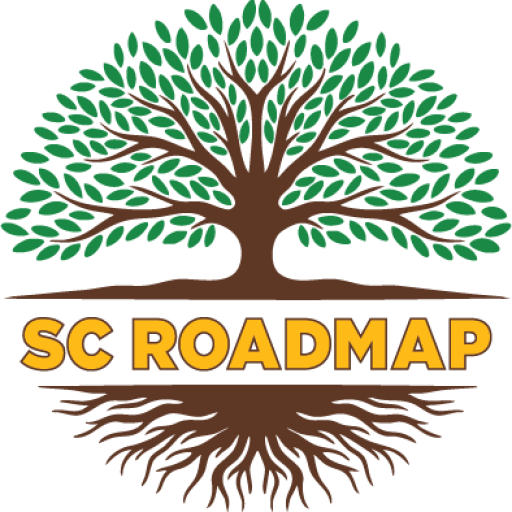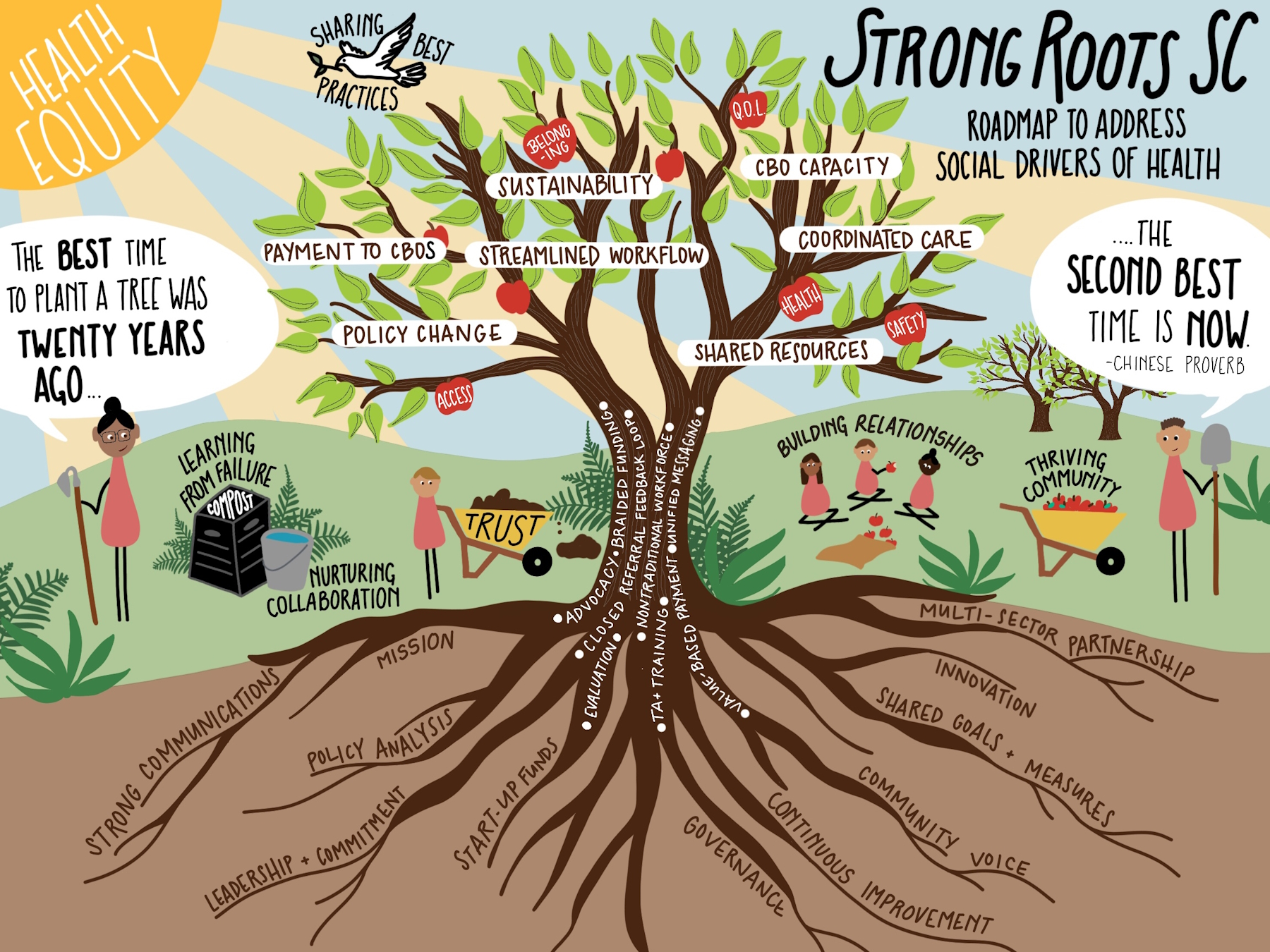Strong Roots SC
The SC Roadmap to Address Social Drivers of Health
THE ROAD WE’VE TAKEN
In 2019, a multi-sector group of leaders developed the SC Roadmap (Phase 1)—an initiative supported by the BlueCross BlueShield of South Carolina Foundation and the Duke Endowment, to align priorities, improve coordination, and drive action on the conditions that most impact health and well-being. The Roadmap outlines a set of recommendations to guide collabraotve efforts across sectors.
From January 1, 2022 to June, 2023 a vision was crafted for South Carolina’s SDoH Roadmap by the Center for Applied Research and Evaluation. Three cores — Data, Programmatic, and Administrative — made up of local and state level leaders representing diverse sectors created the Roadmap’s Phase 1 governance structure.
Through these discussions, several SDoH policy and infrastructure solutions were identified that members felt could improve the coordination and delivery of service to individuals.
Another resulting decision was to establish a formal body and infrastructure with a Common Agenda that advances the vision, discussion, and recommendations into action (known as Phase 2) over the next three years (July 2024-June 2027).
Click on the image of each phase to learn more…
Phase 2 – The Road Ahead
The lead organizations have been defined and are committed to using the important groundwork from the first three phases to support South Carolinians who need to overcome roadblocks that keep them from being part of a thriving and healthy community and workforce.
While the primary goal remains improved health, social needs are being addressed because it has long been shown that they are one of the two biggest determinants of health outcomes.
This website and new social media presence will play an important role in broadening SC Roadmap’s reach and delivering the most current information.
Phase 1.3 – The Cores
With the conclusion of the Learning Collaborative, a new phase launched. Originally planned by the Design Committee early in the process, three Cores were formed to move the endeavor forward. The Data Core, Programmatic Core, and Administrative Core continued the work started by the Learning Collaborative, as the mission remains to identify and create pathways aimed at addressing SDOH in South Carolina.
The Data Core’s vision has centered upon robust data sharing processes among organizations such as healthcare systems, community-based organizations (CBOs), social service agencies, and more. They envision a statewide, data-integrated, case referral management platform with closed loop referral capabilities.
The Programmatic Core has focused on community collaboration with multi-sector partnership. They cite the capacity building of community organizations as an essential part of this work. Likewise, they identify poor communication and working in silos as challenges to addressing SDOH in SC. Finally, the Programmatic Core endorses finding sustainable funding sources, such as payment arrangements between hospitals and CBOs.
The Administrative Core’s effort has concentrated on financing mechanisms to support SDOH work. These mechanisms include braiding/blending funding from various sources such as operational funds, managed care organization (MCO) funds, grants, and government funding. This Core has examined funding sources that were common in other states, and researched models such as value-based payment models, the Alternative Payment Models Framework and more.
Phase 1.2 – The Learning Collaborative
Instead of letting inertia undermine all the progress made so far, the effort pivoted toward a focus on food insecurity, with the South Carolina Roadmap to Food Security Learning Collaborative launching in January of 2021.
The Learning Collaborative could be done remotely and therefore circumvented the restrictions imposed by the pandemic, and food insecurity had been identified as the most widespread issue in South Carolina.
Once again, CARE, with its experience facilitating learning collaboratives, played a lead role in the work. HealthBegins remained on board, with their SDOH expertise forming much of the curriculum. The mission of the Learning Collaborative was to discover and define ways of reducing food insecurity in South Carolina, with those methods and pathways forming a prototype for future work to emulate.
When the Learning Collaborative wrapped up a year later, the effort was found to be well worth the time and effort, with several success stories demonstrating just what can be accomplished when SDOH is addressed.






